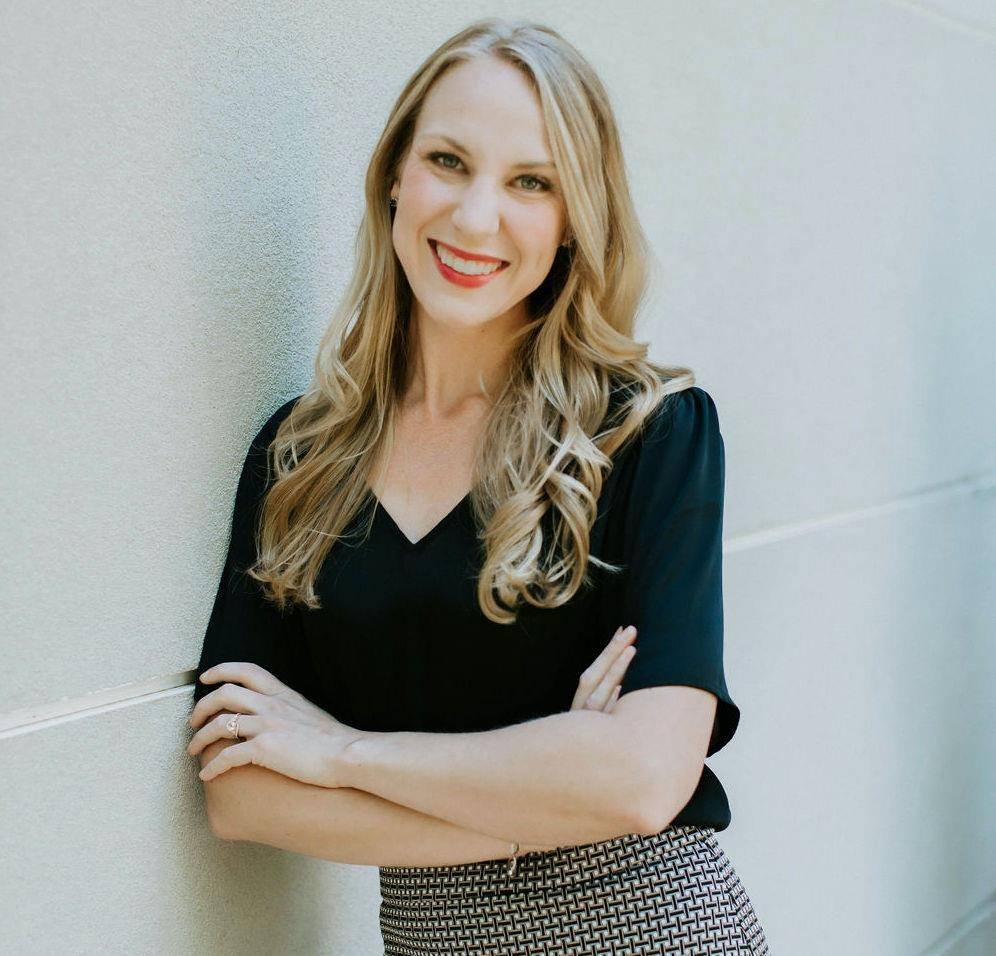Imagine this:
You spend weeks building and designing the perfect landing page.
It’s going to drive an insane amount of sales.
You press the publish button and it goes live.
However, it does nothing… 🤯
What gives?
The conversion rate stinks!
Many entrepreneurs don’t realize the importance their sales copy has on conversions.
If anything, it makes THE biggest impact on conversion rates.
That’s why learning conversion copywriting 101 is a high return skill all marketers need.
It will give you the knowledge to write copy that enhances click-throughs, engagement, and action.
All of which turn into sales. 🙂
Want to learn how?
Keep reading.
Why you need a conversion copywriter
Sure, you could roll up your sleeves and do all of the conversion copywriting yourself.
Or, you can hire a conversion copywriter like myself and reap all of these amazing benefits.
They (obviously!) drive conversions and revenue
Do you want to lift conversions and drive more revenue?
Who doesn’t!
Conversion copywriters are experts at identifying all of the CRO opportunities within ads, web pages, and other assets.
It’s easy to miss all of the little details that contribute to high performing advertisements.
A talented copywriter will come in and boost the conversion rate of your campaign.
This, as a result, will also increase revenue or other key performance indicators.
For example, maybe you want to increase the conversion rate of a landing page and generate more leads.
They can do whatever you need.
Save headaches and time
Let’s be real. You have better things to do.
Copywriting is the least of your worries.
You need to be developing your product, nurturing client relationships, and building strategic partnerships
…Not tinkering with sales copy.
This is a HUGE reason that all businesses need to hire a copywriter.
They are going to save you an immense amount of time and headaches that can be invested elsewhere.
If it’s not you’re strong point, there’s no point in the uphill battle.
There’s nothing that a copywriter can’t help with. That includes:
- Google Ads
- Facebook Ads
- Brochures
- Billboards
- Landing pages
- Sales letters
- Sales pages
- Web pages
- Print ads
- Social media copy
They can be increasing the conversion rate and performance of every facet of your business. 🚀
Leave the competition in the dust
Do you have competitors that are constantly playing a game of tug of war?
Of course, you do!
Every business has competition. 🤼♂️
The right copywriter is capable of identifying a unique value proposition or mechanism to make your company stand out.
It will be a no-brainer for customers to choose your product or service.
However, it isn’t easy. It takes time. Research. Dedication.
Leave that in the hands of a copywriter and they will transform your advertisements.
You can make data-driven decisions
It never ceases to amaze me how many copywriters don’t use data and analytics.
They simply write copy, hand it off to a client, and disappear. 👻
Instead, what I like to do is ask for my client’s Google Analytics, Tag Manager, etc.
I’ll set up tracking for individual buttons, pages, and so other critical parts of the campaign.
This way we can find where to improve the sales copy and marketing for the greatest lift on conversions.
Doing this also gives m clients much more data and insights than if we hadn’t. These findings can be leveraged to improve other campaigns.
What is conversion copywriting?
What is conversion copywriting, anyway?
It’s the ability to write sales copy that has a focus on increasing conversion rates.
And, a conversion rate is the number of customers who take a desired action.
This can be anything from purchasing a product to signing up for an email newsletter.
It’s calculated as such:
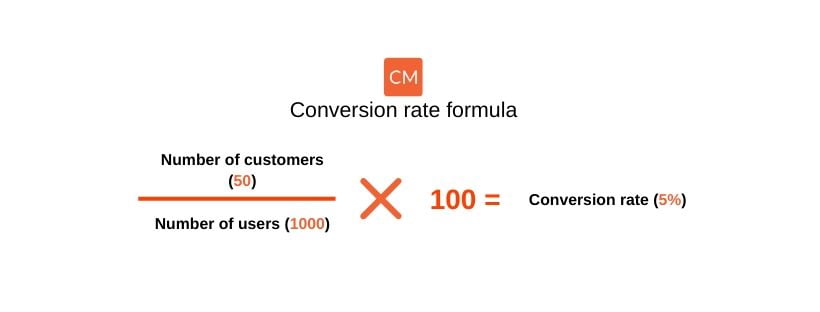
You divide the number of customers by total users and multiply the result by 100.
If you have 1,000 users and 50 customers in a single period, that’s a 5% conversion rate.
Keep in mind that the average website conversion rate is approximately 2.35%.
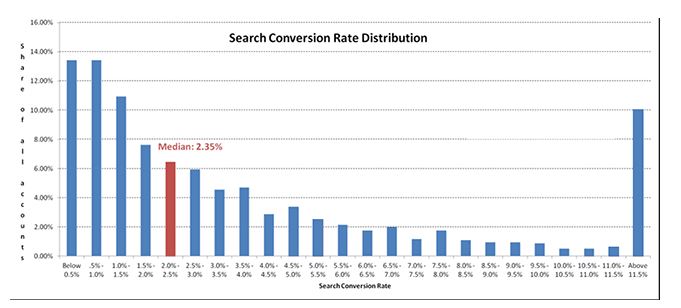
Mastering how to increase conversions with copywriting is a superpower.
You will be able to quickly identify weak points in existing material and produce high ROI copy from scratch.
I’ll share the strategies to do that next.
Conversion copywriting guide
I gave you the steak and now I’m going to give you the sizzle.
These are the fundamental principles that will help you become an excellent conversion copywriter:
It all begins with the headline
What’s the first thing that readers lay their eyes on?
The headline.
If it’s good = people click.
If it’s bad = people don’t click.
And, if nobody clicks through, that means no conversions. 🙁
Try out the below headline strategies to boost conversions.
Make it benefit-driven
As you’ll be learning later, the benefit of a product is one of the most key pieces of information you relay as a writer.
Because people don’t buy products.
They buy emotions.
After all, a product will create certain emotions and experiences for the customer.
That’s what they want to read about.
Thus why a benefit-driven headline is so powerful.
Check out this ad for SendGrid:
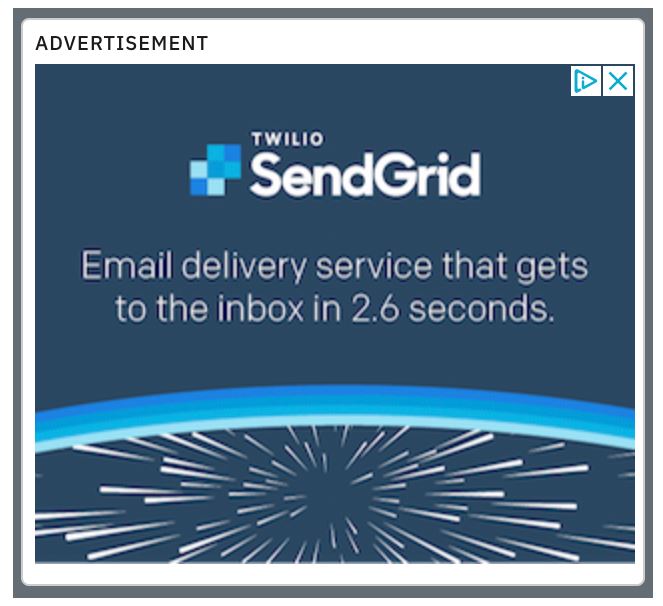
The headline reads “Email delivery service that gets to the inbox in 2.6 seconds.”
It’s very specific and has a precise claim.
A.K.A if someone uses their services, emails will be sent faster and delivered more often.
Brainstorm what the main benefits of the product you’re selling are and include that in the headline.
Here’s another great example from the SEO software company Nightwatch:
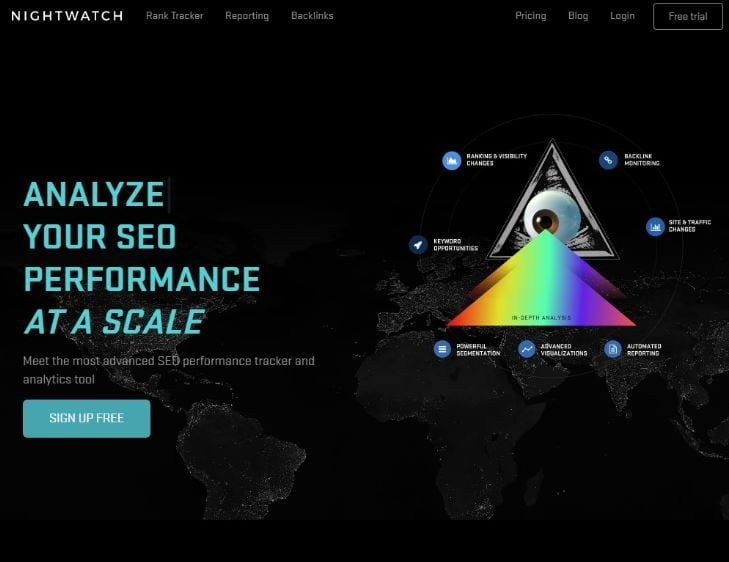
The benefit of the headline is being able to analyze a company’s SEO at scale.
The subheading claims its the most advanced SEO performance tracker and analytics tool, as well.
Create a sense of mystery
Sometimes leaving out a little detail is a good thing.
It piques readers interest.
It gets them wondering.
This can also create a FOMO effect. (Fear of missing out.)
It puts a fire under their butt to read or else they will miss out on an awesome opportunity.
You have to do this tastefully, though.
There’s a fine line between a title that oozes mystery and suspense and one that plain sucks.
Here’s a good illustration from a condominium ad:
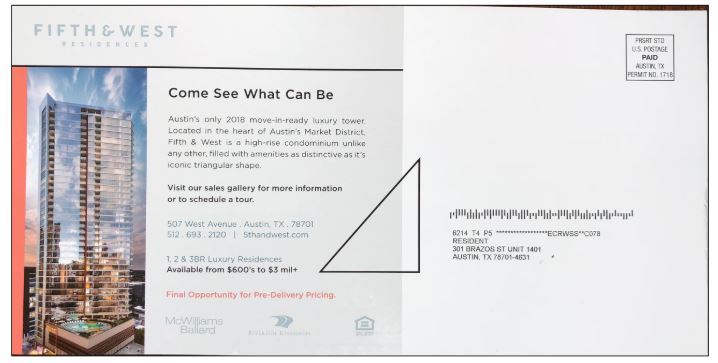
“Come See What Can Be” is a call to action and also has a hint of ambiguity.
It isn’t very descriptive, allowing the reader to imagine what condos are available, their quality, lifestyle, etc.
Address a problem the reader is experiencing
Customers buy and for one reason only.
Do you know what it is?
To solve a problem.
That’s it!
Think about it…
Whether it’s a new t-shirt or business services, the customer is paying to solve an under-the-surface problem.
Addressing (and resolving) a problem within the headline will get customers excited to learn more for this reason.
Netflix used this strategy in one of their promotions.
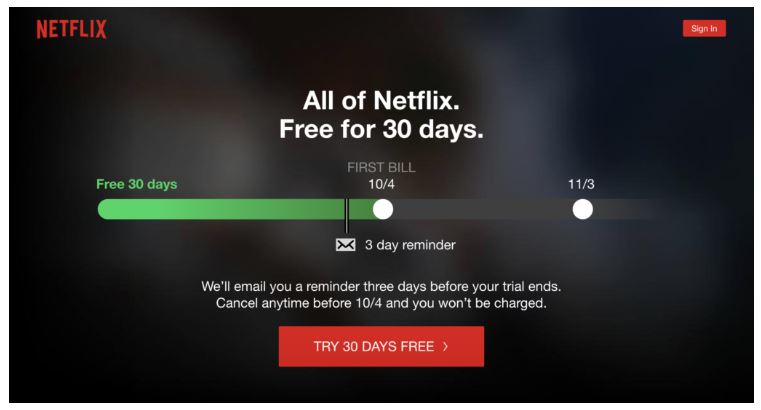
They offered “All of Netflix. Free for 30 days.”
Short and sweet.
It’s also completely benefit-oriented.
The customer receives all of Netflix’s features free for 30 days.
It doesn’t get better than that.
One page, one purpose
Sometimes less is more.
This is especially the case with landing pages.
A landing page is a section of a website designed to collect information or promote a single action.
That means that every landing page should have one purpose.
Don’t make it complicated.
Don’t make it busy.
Have you ever noticed that some of the best sales letters are long, ugly, and plain?
It’s because they convert like crazy and have no distractions besides the main offer.
Here’s how to apply this principle:
Limit the navigation and footer
The more options you give readers, the less likely they are to convert.
It’s easy to see why.
You’re increasing the odds they become confused or don’t convert on the main goal.
Alternatively, web of a landing page and they can only do one thing.
In particular, this begins with the navigation and footer.
If you want them to remain on the most important pages, it has to be tightened up.
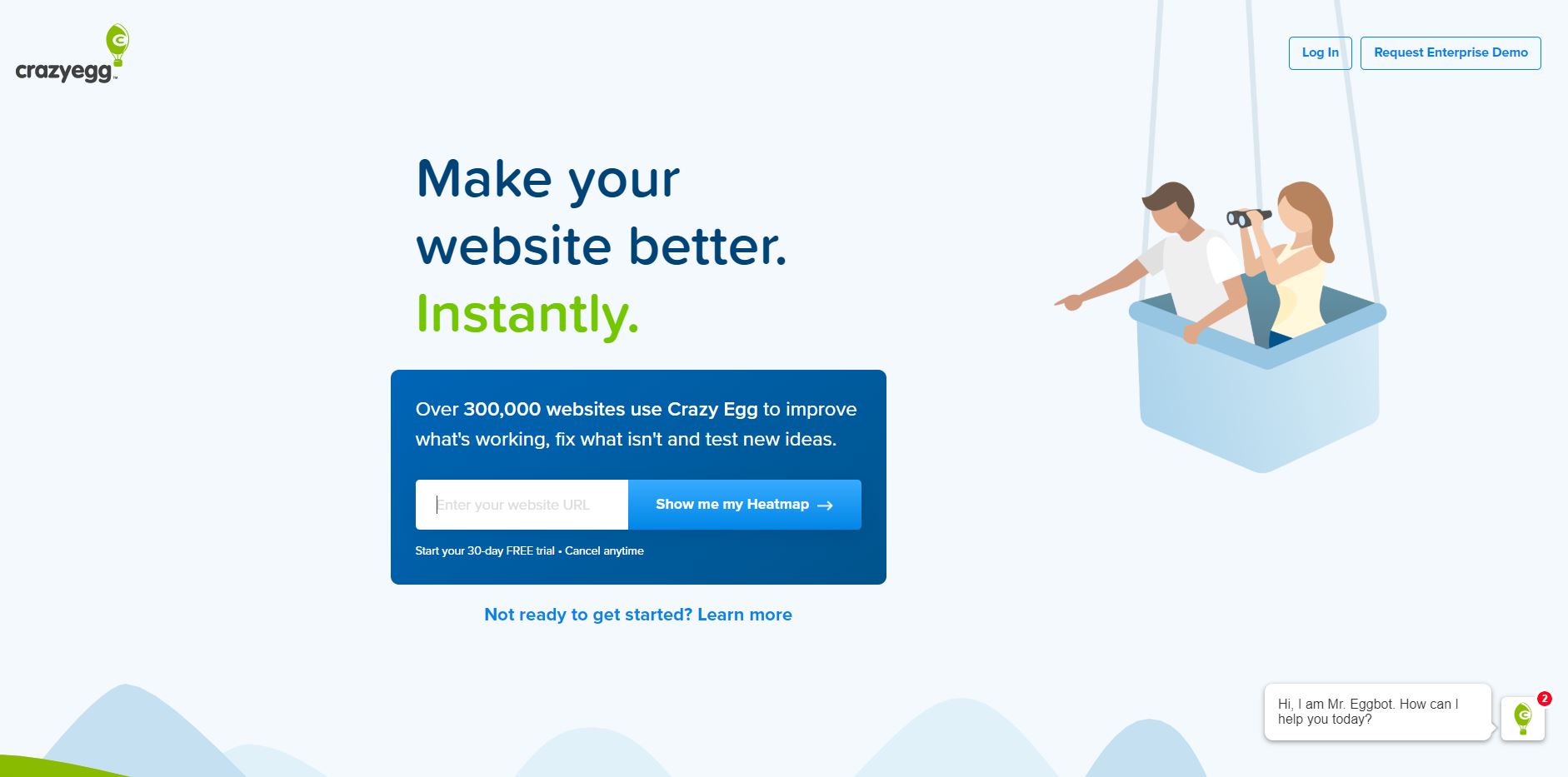
Crazy Egg does this wonderfully.
There are two login buttons on the top with a call to action form and live chat when you land on the homepage.
This limits what a user is able to do, thus pushing them towards the highest return action.
Apply this same concept to the footer.
It’s wise to keep policy and terms of service pages, however.
Have one offer
Every page should have a single offer.
Once again, you don’t want to confuse readers or have them going on a wild goose chase.
I’ll give you a personal example.
Originally my homepage was very busy.
I had copy about my services, press, philanthropy, and more.
It was all over the place.
My theory was that it would cater to as many people as possible.
Until I practically chopped it in half.
Now it looks like this:
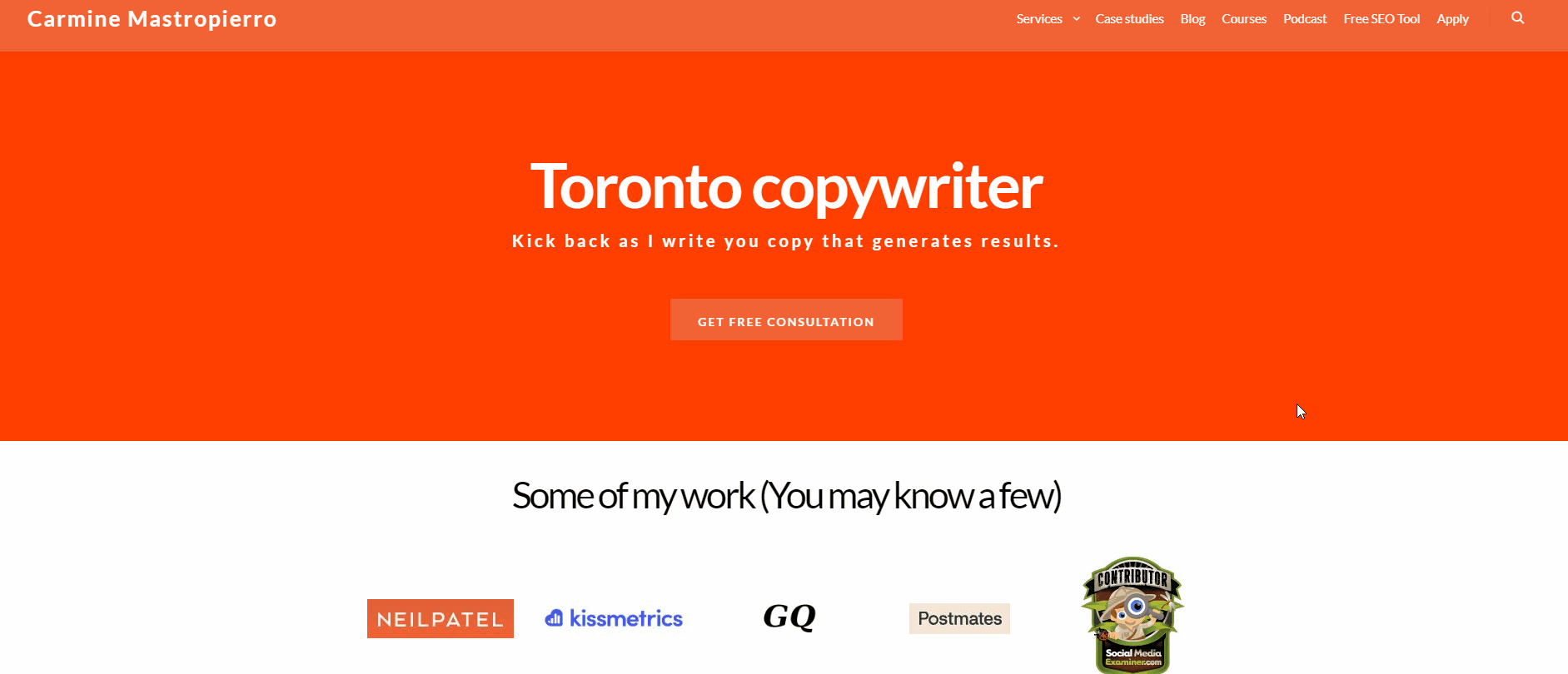
Simple, huh?
There’s the main call to action, social proof, results, and a second CTA.
Most users will either learn more about me, schedule a free consultation, or consume free resources I publish.
Who are you writing for?
If you really want to see conversions jump through the roof, you NEED to have a clear understanding of who you’re writing for.
This is because every segment of customers is wildly unique.
Their demographics, psychographics, and other traits are all different.
Writing copy for one customer base will not perform the same for another.
This is what separates the boys from the men in writing.
If you develop thorough processes for researching customers and produce material just for them, you have a lot of money ahead of you.
These are three of the most important traits you need to know about any customer:
- What are their pain points?
- How do they speak?
- What do they value and care about?
Unlocking these allows you to craft the most impactful writing.
And, you’re probably wondering “How can I do that?”
I suggest that study competitor reviews and testimonials to begin.
These give you insight into all three questions above.
Look at these from a marketing agency:
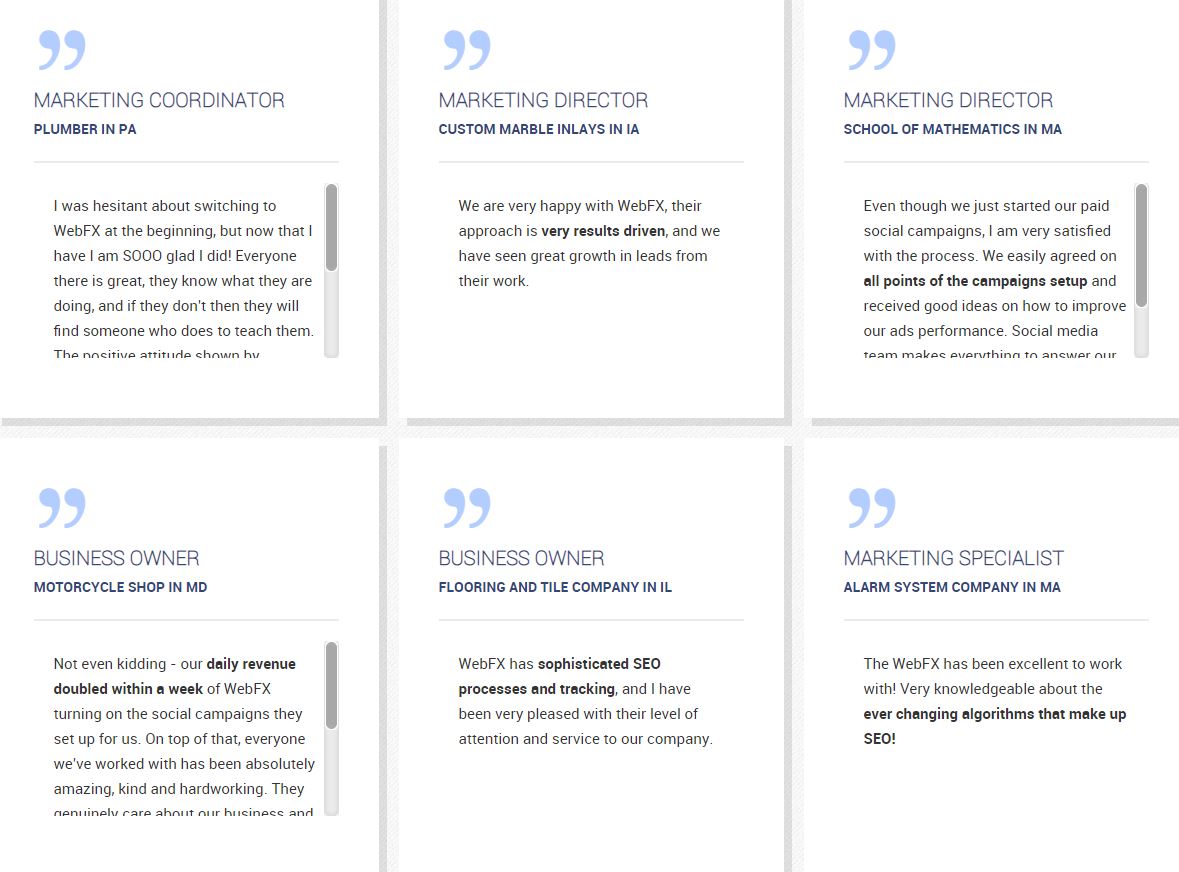
Analyze reviews and testimonials for patterns and ideas.
What problems did the customers have?
What did they enjoy about the service?
Why did they choose the service provider?
Dig deep. Pretend you’re a detective.
Do this to several competitors to discover trends.
Organize this information in a document to reference while you’re writing.
Match ads to landing pages
If you clicked an ad for a free e-book and it directed you to a paid sales page, you’d feel cheated, right?
Precisely why you shouldn’t do that to customers.
Not matching ads to landing pages is an extremely common mistake.
It’s also very costly.
This is avoided by simply aligning the copy and creatives of an ad (or another channel) to the page users land on.
See this ad on Google?

It brings me to this page when I click it:
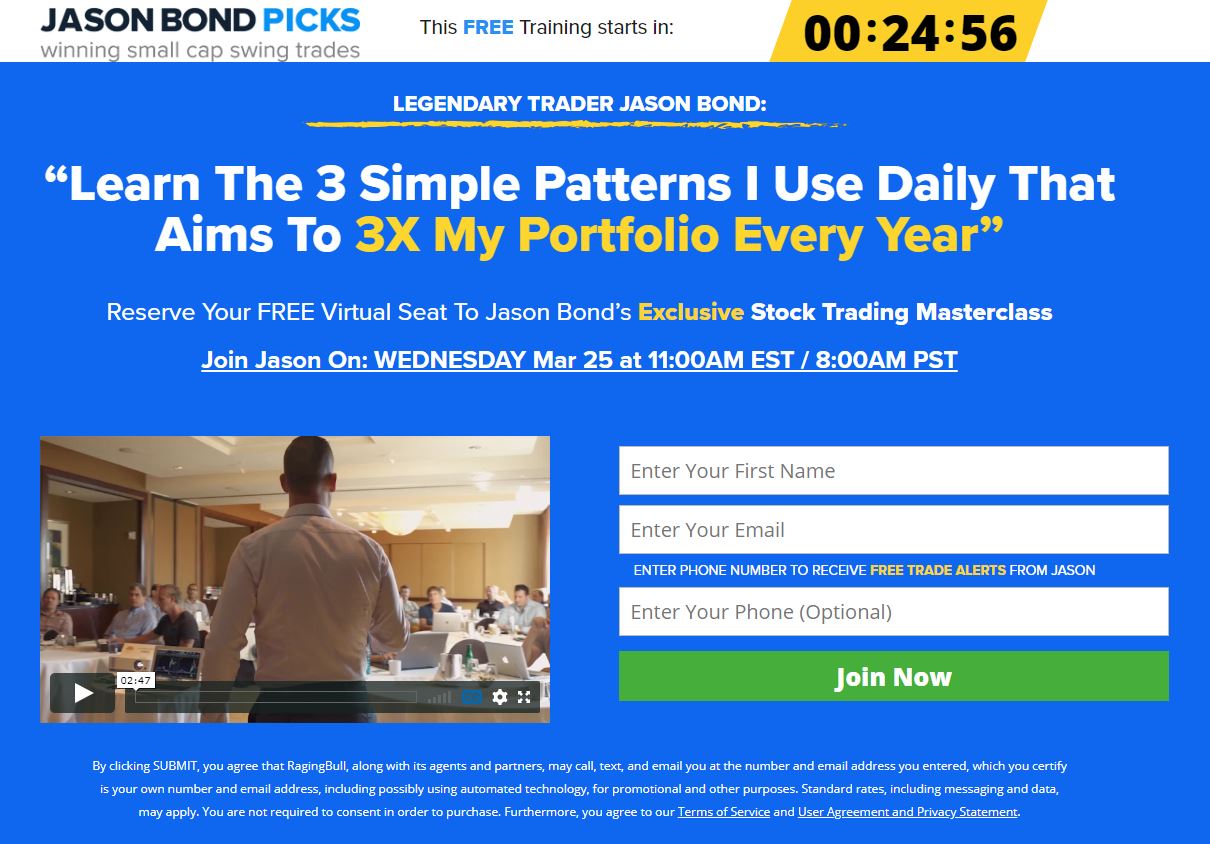
The Google ad promises a day trading guide and the landing page offers free training.
If I wanted to nitpick, “Guide” could have been “Masterclass” or “Webinar” to make it as accurate as possible but it’s great nonetheless.
Purchasing is mostly emotional
As I mentioned before, one of the most critical takeaways to remember is that consumers don’t buy products…
…They buy emotions.
…They buy experiences.
Thus, sales copy needs to establish an emotional connection to make the largest impact.
How do you do this? By applying these three practices:
Incite imagination with vivid deal
David Ogilvy, one of the world’s best advertisers, was extremely efficient at making the reader use their imagination.
He could make any person touch, taste, and hear a product without ever having it in their hands.
How?
By using so much detail that you can’t help but vividly imagine using it.
Conversion copywriters apply these methodologies by explaining every product feature with as much detail as humanly possible.
Don’t leave out anything about colors, size, dimensions, materials, or likewise.
Moreover, explain the feelings you get interacting with these components.
What does it smell like? Feel like? What would they see and hear?
Make connections. Analogies. Metaphors.
This is an ad for Schweppes that encompasses these ideas:
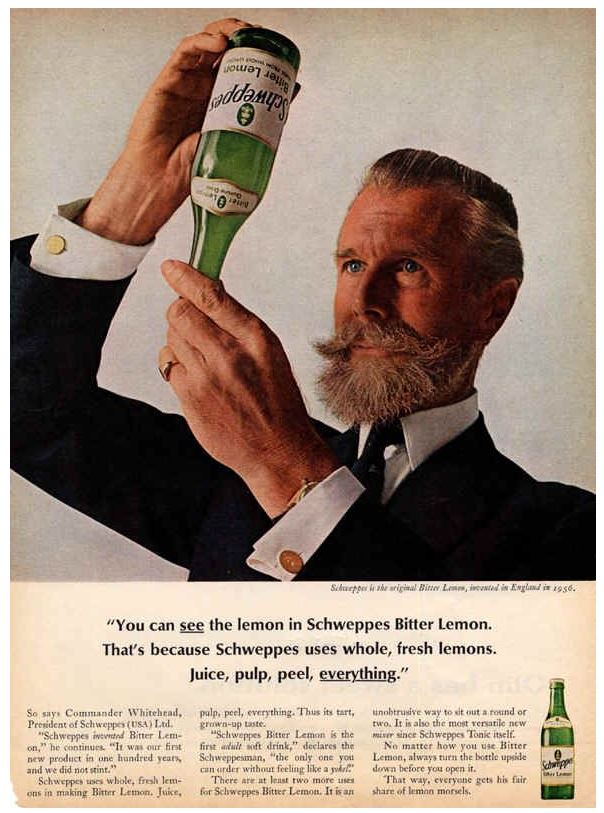
The headline reads “You can see the lemon in Schweppes Bitter Lemon. That’s because Schweppes uses whole, fresh lemons. Juice, pulp, peel, everything.”
This instantly paints a picture in your mind of what the drink looks and tastes like.
Push their buttons
Not only do emotions cause someone to buy something, but a simple problem does, too.
For instance, why would some buy a website? Because they don’t have one nor the skills to create one themselves.
Why would someone buy a new television? Because the old one was getting slow and fuzzy.
See what I mean?
Address the problem that the reader is experiencing to get their attention and create an emotional response.
Dig deep, too.
Touch on the symptoms and situations the problem is causing for them.
Then, position your offer as a solution. 🙂
How will it change their life?
A guaranteed way to get customers excited about a product is by explaining how their life will be better after.
This could be through increased income, confidence, or health.
Your individual product or service will determine the exact gain, but make it be well known.
What emotions will they feel?
What will they finally be relieved of?
Paint a picture that helps them see the product in use.
Experiment like a scientist
A huge component of conversion copywriting is split testing.
I’m talking about testing headlines, calls to action, and everything down to single words.
All of these can massively increase conversions and that means more money in your pocket.
There are many instances in which a simple tweak to a sentence or button makes conversions jump.
Here are some elements of copy and related material that should be experimented with:
- Headlines
- Sub-headings
- Calls to action
- Unique value propositions
- Product features and benefits
- Format and structure
- Images and visuals
- Font size
- Colors
- Audiences
- Landing pages
This is easy to implement with the tolls availbe today.
For example, you can create a goal in Google Analytics to measure conversions.
This might be for purchase, visiting a thank you page, etc.
Navigate to the admin panel of Google Analyics and click “Goals.”
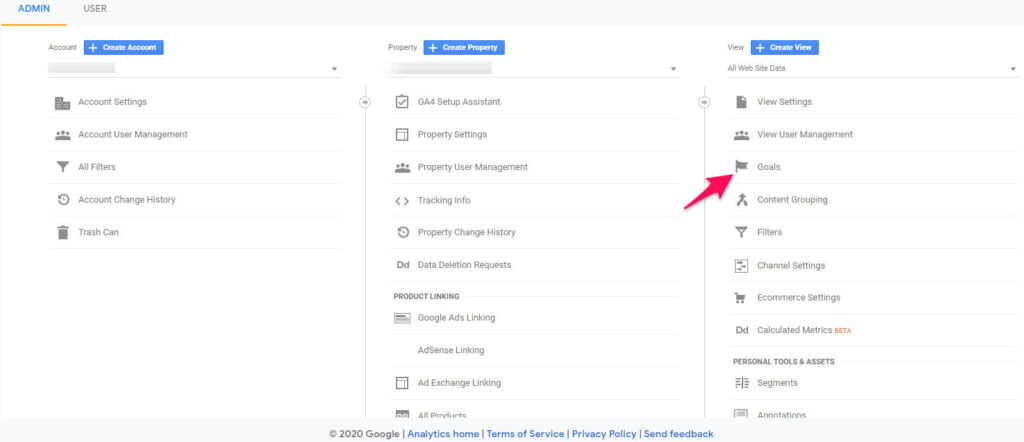
Select “New Goal” to create a goal.

Set up the goal by choosing the template, smart goal, or custom option.
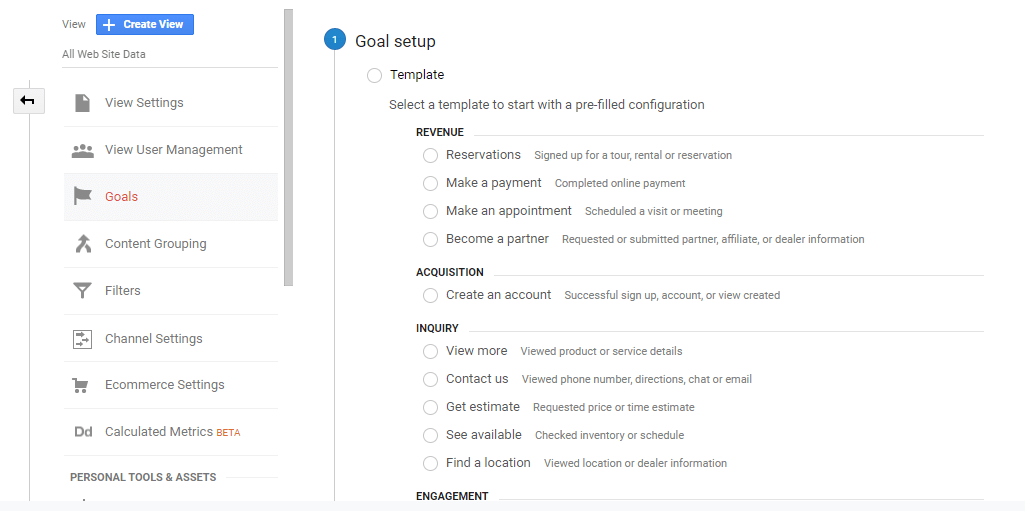
Assign it a name and choose a goal type such as destination, duration, or event.
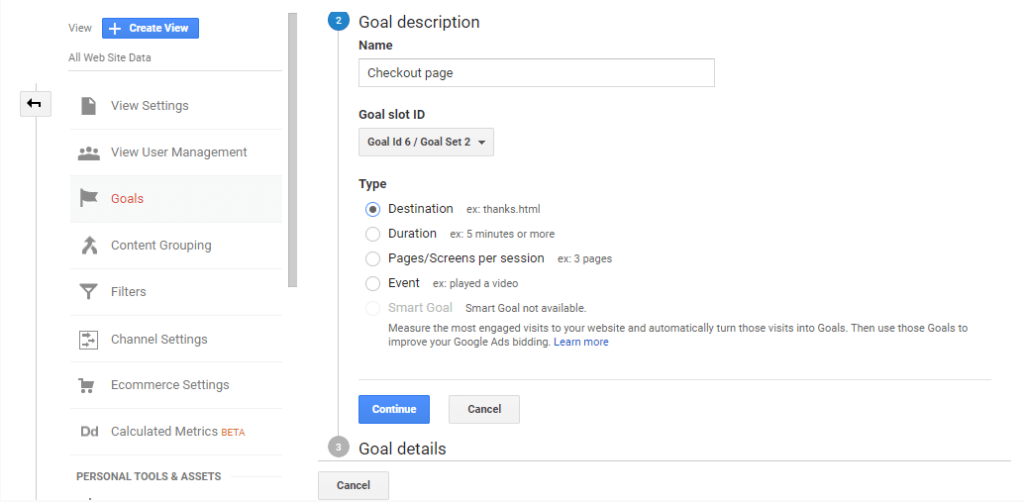
Depending on which goal type you choose, you will have to adjust the details accordingly. For example, the “Destination” option instructs us to enter a page to measure goal completion.
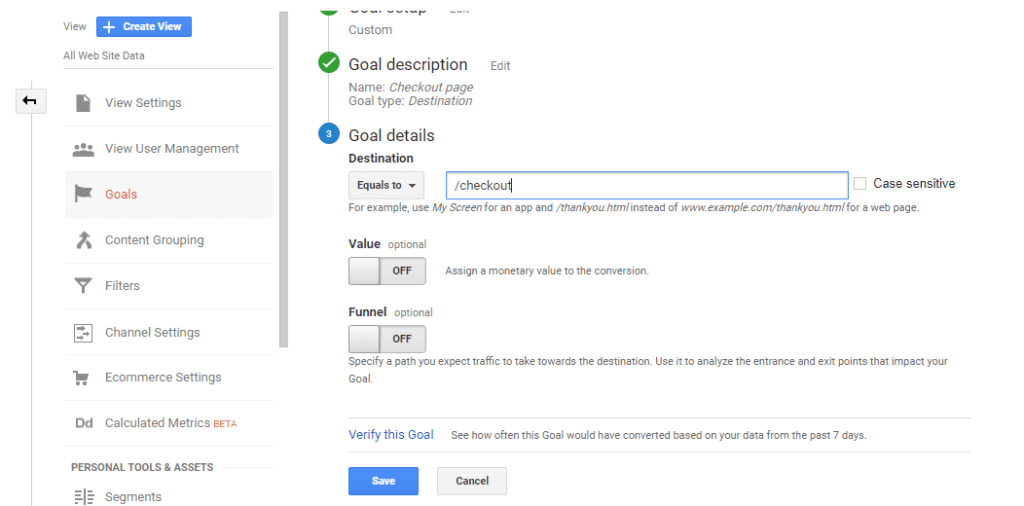
Save the goal and it will now appear in other Google Analytics reports. You can track what traffic, segments, and other elements are contributing to conversions.
Optimize copy for search engines
Did you know that leads from search engines close at a much higher rate than outbound.
Think about it.
If someone searches for a topic or service, does their research, and reads your copy, they are much more dedicated.
They have qualified themselves by putting in the effort to contact your business, read a sales letter, opt-in, etc.
This is why I recommend every conversion copywriter to master SEO writing.
It’s not as hard as you think. You don’t have to be a tech wizard.
In fact, I rank on the first page of Google for hundreds if not thousands of valuable keywords.
I do the same for my clients every day. Check out my copywriting case studies to learn more.
Optimizing sales copy for search engines comes down to using a blueprint that you can apply to every page.
Here are some of the main things you need to do.
Step 1: Research keywords
Every piece of sales copy needs a target keyword. (If not a few!)
These are the words and phrases you want to rank for on Google.
Keep in mind everything I said about traffic temperature and the buyer journey.
It applies to on-page SEO and the keywords you select.
For example, what do you think someone would want if they searched for “How to hire a conversion copywriter?” versus “Conversion copywriting guide.”
The first person would want advice on how to hire a copywriter. Questions to ask. Interview tips.
The second would be interested in how to write sales copy that converts. They need guides, how-tos, tutorials, etc.
Why is this important?
Because it’s called search intent and plays a massive role in the algorithm.
We want our copy to match precisely what the user is searching for.
Use a free keyword research tool like Google’s Keyword Planner.
Enter an idea and look for keywords that:
- Have a reasonable monthly search volume.
- Low competition.
- Relate to the sales copy.
That brings me to my next point.
Step 2: Edit your metadata
Next, I want you to edit the metadata of the page with your keywords in mind.
The first element is the title tag. This is the title that displays in a browser and on a search engine listing.
It’s pulled from the title of the page or if you’re using something like Yoast, there’s a section to edit it directly.
Place the keyword as close to the front of the title tag as possible.
Edit the meta description (the small blurb underneath the search engine listing) next.
It should clearly explain what’s on the page, the benefit of clicking through, and use the main keyword.
The URL of the page should ideally be optimized for a target keyword too.
I usually shorten the URL down to the exact search term.
Google’s little spiders will crawl the page, see the term repeatedly, and rank you for it!
Step 3: Place your keywords on the page carefully
The last step is to place the keywords on specific parts of the page.
Include it with the introduction or first paragraph.
It also needs to be placed within the first H1 header tag. Google analyzes header tags to understand what a page is about.
The keyword should be used within the body of the sales copy a couple of times depending on the page’s length.
Use it sparingly along with variations and secondary keywords.
I also want you to place the keyword within the alt text of media and file names.
Alternative text is the description that appears when an image doesn’t load or screen reading software reads it aloud.
The main keyword should be placed near the end of the page in the conclusion or offer area as well.
If you follow all of these steps, your sales copy will rank higher on Google and drive more conversions. 👍
Match copy to the customer’s position in the buyer journey
No customer is the same.
They all have unique wants, needs, and desires.
However, customers tend to move through the same stages when purchasing a product. This is called the buyer journey.
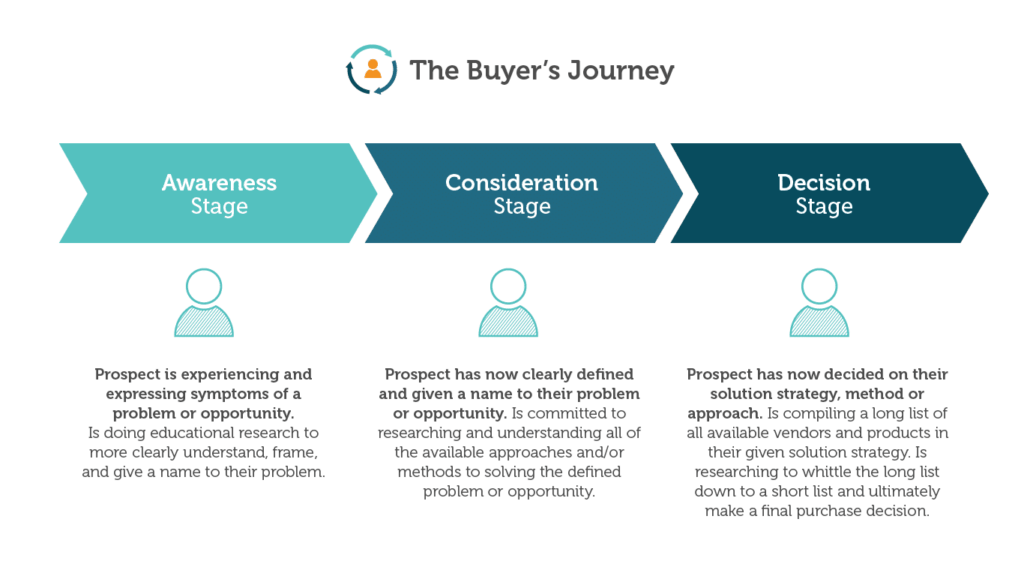
It starts with awareness. The prospect is just becoming aware that they have a problem that needs to be solved.
In this case, the sales copy or content needs to focus on educating.
They are aware they have a pain point but not necessarily how it can be solved or how you can help.
Advertorials and blog posts are very effective at this point. They help earn trust, build credibility, and educate the consumer about a specific topic (while tying it into your product or service).
Next, there is the consideration stage. At this point, people have done their research and have some ideas about what options are available.
They are aware of your product, what it can do, and which competitors can do the same thing.
These people trust your brand more than cold traffic.
You can present them with whitepapers, case studies, and deeper information to convert them.
It’s also an excellent opportunity to use strategies like free + shipping or tripwire products. These are cheaper products that range from $7-21 and get them psychologically prepared to buy something more expensive.
Lastly, we have the decision stage. As you could guess, this is when consumers make a final decision and whip out their credit cards.
Free consultations, demo, and free trials tend to be the most effective at converting in this stage. They’re at the edge of their seat and need one last push.
Recently I was reading Russel Brunson’s book DotCom Secrets and it made a fascinating parallel…
When it comes to the traffic you drive to landing pages, sales, pages, etc. we must address the traffic temperature. Think of it like this:
- Cold traffic: These are individuals that don’t know you and are seeing your brand for the first time. They require education the most to build authority and credibility in their eyes.
- Warm traffic: People that opt into newsletters or download lead magnets are warm traffic. They can be sold smaller products on the scale of your “value ladder.”
- Hot traffic: Finally, people that have purchased products from you (small or big) are hot traffic. These are individuals you can promotional material to and they will most likely convert.
Wrapping up conversion copywriting
Conversions come with hard work.
Naturally, that implies you must know how to write excellent copy.
You’d have a blank page without it.
If your conversions won’t budge, start with the headline.
Is it exciting? Does it make reading the rest of the copy enticing?
Then, ensure that every landing page (or any material) focuses on a single purpose.
Having many different calls to action and offers makes it confusing.
All of the copy also needs to be tailored to one audience. Not everybody.
The ad or other channels used to drive traffic also need to keep their promise.
Don’t say one thing and deliver another.
Finally, put on your chef hat and do some experimenting.
Split test titles, CTAs’ visuals, and other elements.
What are you waiting around for? Use what you learned today and boost conversions! 📈
Reach out to me if you need conversion copywriting services.









